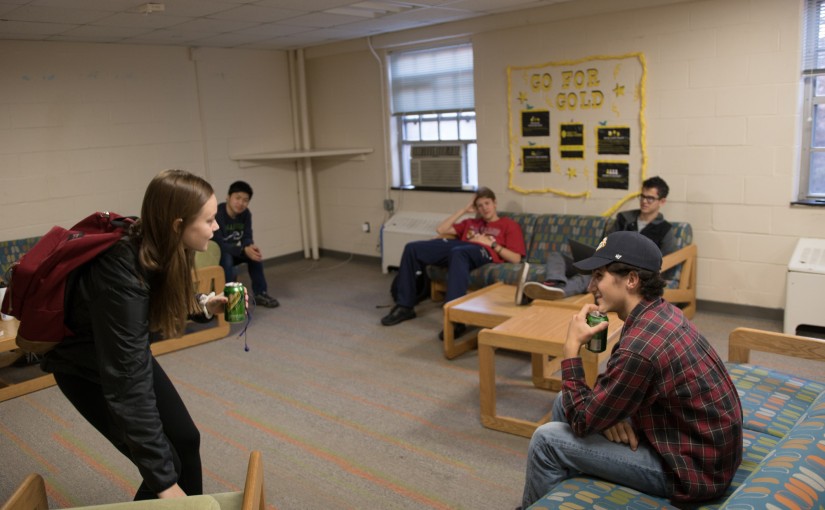Views expressed in opinion columns are the author’s own.
Next year’s crop of freshmen have already endured a lot. They slogged through the University of Maryland’s application process — and all the other stressors that accompany it — and have started trying to find friends and roommates before arriving. The transition from living at home to living on the campus is already a sort of displacement they’re bracing themselves for.
So it’s all a bit disingenuous for this university to send an email to next year’s dorm residents telling them that they may be living in converted dorm lounges, that such lodging is equal to a normal room and that students who don’t like it are welcome to cancel their housing arrangement. This becomes another source of stress for students in a city where housing and food security are precarious enough.
[Read more: College Park doesn’t need another luxury apartment to replace Fuse 47]
This policy, a response to dorm overstuffing, has been used to create extra space since at least fall 2014. This is despite it being implemented only when “absolutely necessary,” according to Tracy Kiras, a spokesperson for the Department of Resident Life. It would be an understandable response if it were a new problem, but this university has struggled to accommodate its growing student enrollment for decades.
After World War II, an influx of veterans enrolled at this university under the G.I. Bill. This necessitated the conversion of the Reckord Armory into a bunker-style dorm. It was the same sweaty Armory where students attend class today, just crammed with as many bodies as possible. And despite how tightly the university packed students into its buildings, about 75 percent of students still lived off the campus at that point.
Since then, enrollment has continued to increase. While this university has renovated a number of dorms and created new housing spaces, it still had the capacity to house only 46 percent of its undergraduate population as of last year. It’s not equipped to meet student housing needs, it hasn’t historically been equipped to meet student housing needs, and it probably won’t be able to meet student housing needs into the future.
Instead of making late adjustments to fit everyone into a dorm, the university should focus on making living easier for students. It could show a commitment to greater integration with the city and support affordable off-campus housing projects. It could make the campus more accessible to commuters by increasing parking and bus access. It could communicate its issues to students more than two months before the deadline for them to pull out of housing without a penalty.
[Read more: UMD may not be a home, but it needs to be a better landlord]
Even saying students have the option to terminate their housing contract isn’t a real reprieve. At that point, the leasing season for off-campus houses and apartments has passed. Finding another housing arrangement in College Park requires a lot of last-minute scrambling, especially for students who are new to the city and don’t have a lot of resources outside the university to help them get grounded before August.
The university tells freshmen it’ll guarantee them on-campus housing their first year, but that isn’t where the responsibility for housing security should end. No student should have to live in overstuffed rooms and makeshift dorms in communal spaces, much less abide with the university charging them thousands of dollars for it.
Sona Chaudhary, opinion editor, is a rising junior English and geology major. She can be reached at sonachaud@gmail.com.



